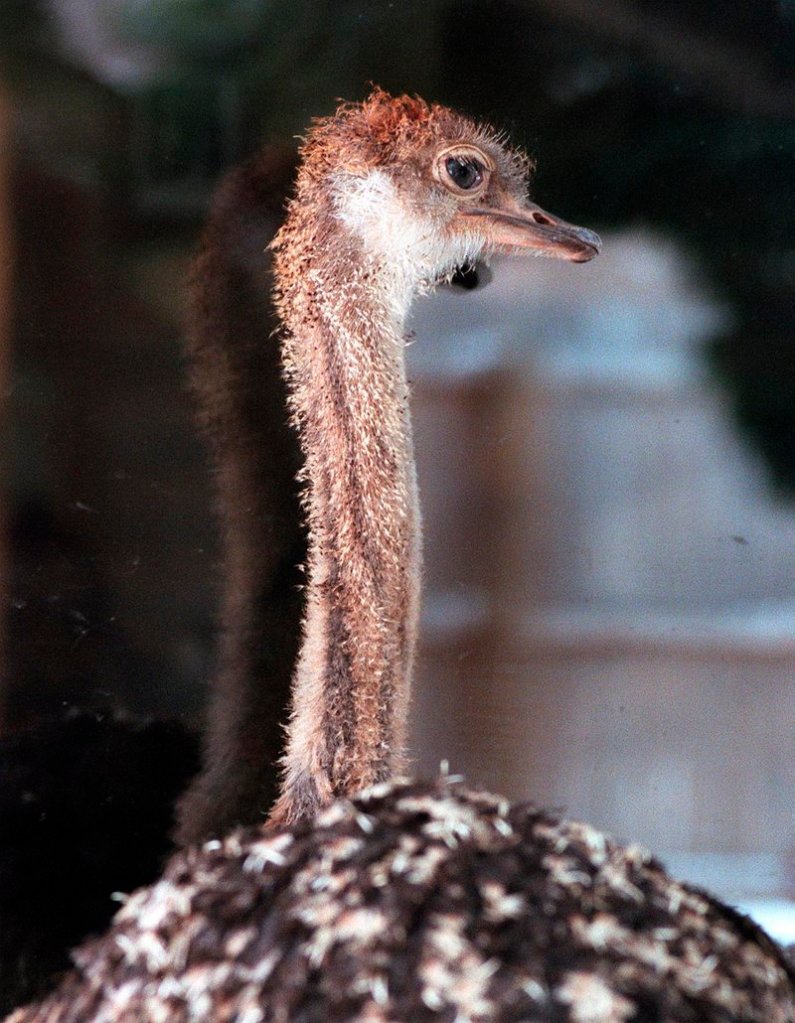I’ve been looking at a lot of shorebirds recently, now that migration has commenced. Have you ever seen a shorebird bob its head up and down rapidly? That behavior is the way that a bird with monocular vision can measure distance.
Humans have binocular vision. That is, we can see most objects with both of our eyes. The slight angular difference between our left and right eye as we focus on an object allows our brain to do some trigonometry and determine how far away that object is.
But shorebirds and many other birds that suffer the risk of predation have their eyes set on the sides of the head. It is really hard to sneak up on a bird with laterally displaced eyes. But except for a narrow field in front of the head (and sometimes behind!), an object can only be seen with one eye. So one would think that a shorebird would not be able to determine the distance with only a single eye fixed on an object.
That’s where the head bobbing behavior comes in. The bird is changing the angle at which it beholds an object by moving its eye up and down. The bird’s brain then can figure out the distance, using the same angular measurements that an animal with binocular vision uses. Birds essentially make one eye do the work of two, giving it depth perception.
Birds have the best eyes of any animal. Bird eyes are huge — the eye of the ostrich is 2 inches across, the largest eye of any land animal. That size is also apparent when measured by weight. Fully 15 percent of the weight of a European starling’s head is contributed by its eyes. By contrast, our eyes contribute about 1 percent of our head weight.
One would expect that birds have a well-developed sense of color, given the striking variety of colors of the feathers and skin of birds. Like the human eye, the retina of a bird eye is richly endowed with cones — sensory receptors that detect color. The density of cones in birds is higher than in any other vertebrate. The density of cones in bird retinas varies from twice to five times the density of cones in the human eye.
At the end of each cone in the retina, one can find a colored oil droplet through which light must pass to reach the retina. These droplets are red, orange, yellow and green. The function of these droplets is somewhat controversial but all agree that the droplets must serve to increase visual acuity.
It’s intriguing to note that the oil droplets in the cones on the lower half of the eye tend to be yellow. Images projected on the lower retina come from above and the yellow pigments filter out the blue of the sky, making objects like peregrine falcons easier to pick up.
The cones in the upper retina tend to have red droplets. Images hitting the upper retina come from below the bird. The red droplets filter out the green of vegetation, making objects of other colors easier to see.
Recent research has shown that some birds are capable of seeing ultraviolet light, wavelengths that are too short for humans to see. The world must look quite different through the eyes of birds.
How good is bird vision compared to that of humans? It’s hard to be quantitative, but it is certain that birds have much more acute vision than we do, and there are remarkable anecdotes as evidence. The European bee-eater can see a bee at a distance of 100 yards! The Eurasian hobby, a falcon that targets dragonflies, can see a dragonfly at 200 yards. From North America, golden eagles can detect the movement of a rabbit from a mile away.
Herb Wilson teaches ornithology at Colby College and lives in South China. He welcomes reader comments and questions at:
whwilson@colby.edu
Send questions/comments to the editors.



Success. Please wait for the page to reload. If the page does not reload within 5 seconds, please refresh the page.
Enter your email and password to access comments.
Hi, to comment on stories you must . This profile is in addition to your subscription and website login.
Already have a commenting profile? .
Invalid username/password.
Please check your email to confirm and complete your registration.
Only subscribers are eligible to post comments. Please subscribe or login first for digital access. Here’s why.
Use the form below to reset your password. When you've submitted your account email, we will send an email with a reset code.